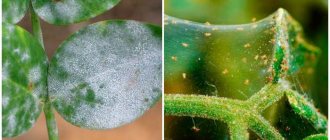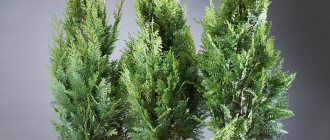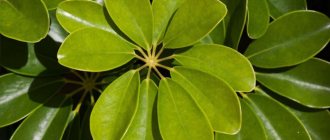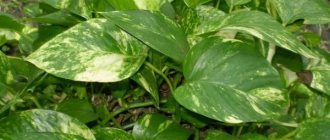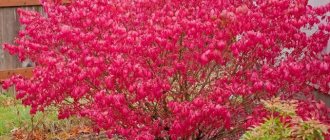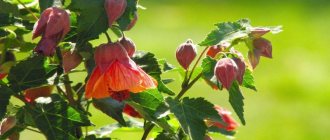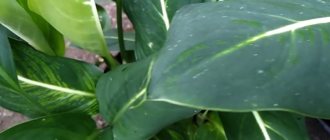Fern is one of the most ancient plants on the planet. Its pedigree dates back to prehistoric times and goes back millions of years. The antiquity of the fern is evidenced by numerous fossilized imprints of leaves, which are discovered during archaeological excavations.
Experts count more than 10,000 species of this plant. Ferns can be found in different latitudes. But in most cases they prefer tropical and subtropical climates. Fern became especially popular in the 19th century, when it began to be grown en masse in greenhouses. You can also grow this crop at home. The main thing is to provide the necessary conditions of detention and basic care.
Structure and reproduction
The main structural feature of the fern is the absence of seeds and the ability to reproduce by spores.
Stems can be curly and erect, branched and straight. Their length ranges from a few to 25 centimeters. The leaves (fronds) also vary in length - from 3-4 cm to 30 meters.
The fern reproduces by spores (at home this method is problematic) and by dividing the bush.
What to do after purchase?
As soon as the fern is brought into the house, it should be isolated from other crops.
After a two-week quarantine, the plant is replanted. The container and soil must be new. It is advisable to choose a clay or ceramic pot. It is better to purchase ready-made substrate for ferns. A drainage layer, for example, made of brick chips, must be placed at the bottom of the pot.
Types of indoor ferns
Main decorative types:
Ferns in nature
- Nephrolepis exaltata is the most famous type of fern grown at home. The most common varieties are Pulmosa with dark glossy leaves and Rooseveltia with lobed leaves. Noteworthy varieties include Can Can with corrugated leaves, Norwoodii with double pinnate and frilly leaves, Whitmanii with very thin curly leaves;
Nephrolepis exaltata
- Maidenhair. This is an elegant fern with a fine structure, the height of which reaches 30-40 cm. Its leaves are bright green, reminiscent in shape of the leaves of the Gingcobiloba plant. It is characterized by very fast growth (it doubles its size in one season) and rapid regeneration. It is not as popular as Nephrolepis, also because it is highly sensitive to changes in place, and quickly fades if the conditions are uncomfortable for it;
Maidenhair Fern
- Platycerium alcicorne is a home fern with the most exotic appearance. The leaves grow up to 70 cm in length, are gray-green in color and similar in shape to elk antlers. This plant is an epiphyte. The lower leaves are large, rounded, with a brownish tint. Under natural conditions, they, clinging to the branches of the host tree, act as a kind of container in which water from precipitation accumulates. Gradually, the old leaves die off, forming humus, which is also contained in these containers and serves for root nutrition of the plant;
Platycerium alcicorne
- Pellaea rotundifolia. Its homeland is New Zealand, where the soil in the undergrowth is rich in limestone rocks. The leaves are round, dark green, leathery. The plant is small in size, up to 30 cm in height;
Pellaea rotundifolia
- Asplenium nidus. It is characterized by shiny, bright green leaves forming a funnel-shaped rosette. Depending on the variety, they can be wavy, jagged, narrow or wide, and can be up to 1 m long.
Asplenium nidus
Pot
It is better to choose a ceramic or clay container for planting ferns. The material should easily absorb and release moisture.
For the first three years of crop development, it is recommended to change the flowerpot every year (preferably in the spring). Then one transplant every three years is enough. The volume of the container depends on the root system.
The diameter of the pot is selected several centimeters larger than the diameter of the rhizome.
Looking after a plant at home
By taking care of house ferns, they create a climate very similar to the natural one. This is required:
- ambient temperature;
- moisture in the surrounding environment;
- presence of light;
- frequency and size of humidification;
- availability of fertilizers;
- transplantation.
The bulk of bred ferns, as in the photo, are immigrants from hot places or subtropical areas of the planet. Although there are also original inhabitants of zones with mild conditions. They must be protected from wind, sudden changes in temperature, and hot sun.
What to feed for growth and what does it like?
Fertilizing is an optional procedure when growing ferns; the plant can easily live without it. But if the leaves become pale, limp or stop growing altogether, it is worth adding fertilizer, since this state of the flower is a sure sign of a lack of nutrients.
The best time to apply fertilizer is during the period of active growth (late spring-early summer). It is recommended to choose liquid fertilizers, as they are better absorbed by the soil. You can choose ready-made complexes for ferns.
Do-it-yourself fertilizer for garden and other varieties
Or you can cook it yourself. A liter of solution must contain the following components:
- potassium salt (1 g);
- superphosphate (1.5 g);
- ammonium nitrate (1.5 g).
Use organic fertilizers with caution as they can burn the roots.
Therefore, it is better for novice gardeners to completely abandon the use of fertilizing. It is better to water the flower with weak tea leaves once every two weeks.
Transfer
The fern plant is a fast-growing plant, and therefore it is replanted every year at a young age. It is recommended to replant adult specimens every 2–3 years. Fern transplantation is carried out in the spring.
In order not to harm the plant, it is advised to replant it into a larger pot using the transshipment method. During transplantation, the base of the rosette of leaves should not be buried in the ground.
The soil from the roots of indoor flowers is not cleaned so as not to damage the fragile roots. An exception is a disease of an indoor flower, in which it is necessary to detect damaged roots and remove them.
To transplant ferns, you can buy a ready-made soil substrate with an acidic environment in the store or prepare the soil yourself. To do this you need to take:
- leaf soil - 1 part;
- humus – 1 part;
- peat – 1 part;
- bone meal – 1/5 part.
You can use another primer containing:
- 3 parts each of leaf soil and peat;
- 2 parts of turf land;
- 1 part humus and sand each;
- 1/2 cup ash;
- a handful of sphagnum moss.
How often to water?
The main thing in this matter is moderation. Fern is a moisture-loving plant, but it does not tolerate waterlogged soil. The gardener's task is to constantly maintain the substrate moist. As soon as the top layer of soil has dried, you can moisten it again.
If the soil is too dry, then subsequent moistening does not always save the plant. The optimal frequency of watering is once every seven days. Moisturizing should be plentiful. It is recommended to use settled or rain water for irrigation.
Special requirements in winter
In winter, ferns need special care. First you need to provide additional lighting. It is better to use special phytolamps or any others that do not heat up for this.
In winter, the indoor air is usually dry, so the plant needs to be sprayed generously.
It would be good if there was a humidifier in the room. If it is not available, it is enough to place a container of water next to the flowerpot.
The frequency of watering depends on the drying time of the soil. In winter, it should also not be allowed to dry out completely.
Diseases and pests
The main reasons for the development of diseases and pests on ferns are the following:
- errors in care (incorrect watering regime, drafts or poor-quality soil);
- infection of a fern from another crop.
Most often, plant diseases are caused by improper watering - cold water with a high chlorine content, or failure to maintain soil moisture.
The most common pests of ferns are nematodes. Due to their vital activity, the foliage turns yellow and dries, and then falls off.
To save the crop from nematodes, it needs to be transplanted into a new substrate and container.
Dry air leads to the appearance of scale insects, aphids and thrips. As a preventative measure, you need to spray the flower regularly. Various types of rot appear as a result of the development of pathogenic microflora, which is caused by waterlogged soil.
Is it possible to keep a fern in an apartment?
Garden fern - planting and care in the country
The esoteric glory of the plant gives rise to doubts: is it safe to keep a fern at home? According to mystical beliefs, it brings with it a negative and positive influence on a person.
Eating ferns
Particularly mysterious are the legends about the fern flower, which is very difficult to detect due to a few moments of flowering, but whoever finds it will receive incredible luck.
Mystical powers attributed to the plant:
- Promotes favorable family relationships, especially between different generations;
- Strengthens vital energy, harmonizes the state of mind. Depending on the habitat, it can, on the contrary, take away energy and contribute to the appearance of ailments;
- Protects the inhabitants of the house from negative influences, damage, etc.;
- Reduces the tendency to financial extravagance.
Suspicious people may be wary of planting a fern at home, believing that the plant attracts troubles and misfortunes. However, for most florists, esoteric myths are not an obstacle to growing a plant in an apartment, enjoying its exotic appearance.
Useful video
The video gives the main tips for caring for the plant in an accessible language:
Fern is a plant with a long history. This popularity among gardeners is explained by its unpretentiousness and variety of species. For active growth of the crop, you need to adhere to the minimum rules of care.
Find out more information about the types of ferns: adiantum, asplenium, blechnum, davallia, nephrolepis, pellea, platicerium, phlebodium, cirtomium.
Watering
The main point in caring for ferns will be watering. You need to water frequently and abundantly. This is especially true in the summer. In winter, during the dormant period, watering is reduced.
The soil in the pot with the plant should not be allowed to dry out - this will have a bad effect on the leaves, the healthy appearance of which will be extremely difficult to return later.
But it is also undesirable to overwater the fern, otherwise the roots will begin to rot.
For irrigation, use soft water that has been settled for 24 hours.
Photo 2. Nephrolepis


